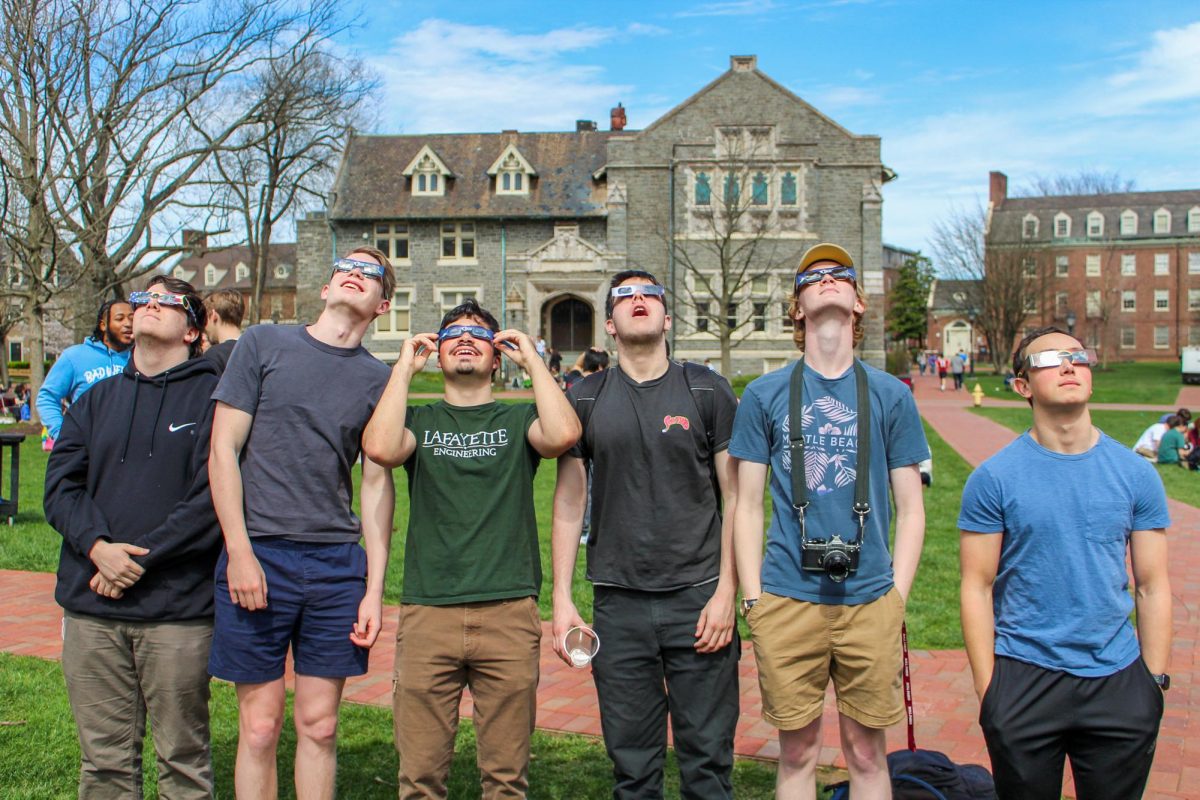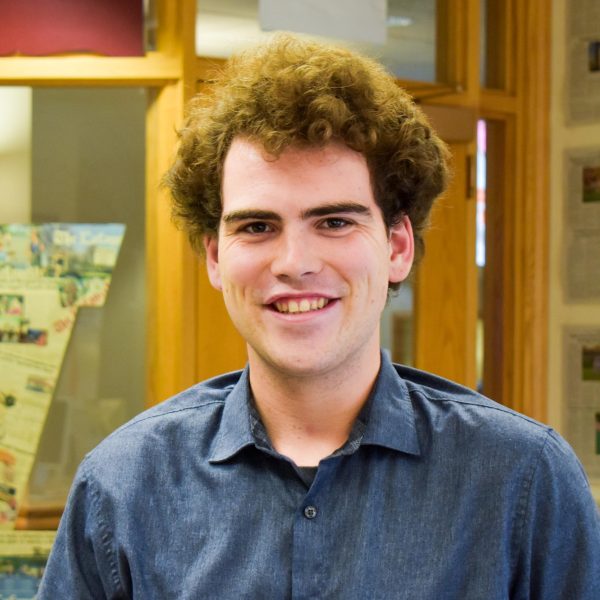Hundreds of Lafayette students descended onto the Quad on Monday as a rare occurrence was on the horizon, quite literally — a near-total solar eclipse.
During a solar eclipse, the moon passes directly between the Earth and the sun, blocking the sun’s light and obscuring its view. The day was cloudy; each time the clouds dissipated to reveal the moon-covered sun, the Quad lit up with cheers.
“Only at certain times are the orbits aligned correctly so that the moon actually passes directly between the sun and the Earth,” said physics professor Stephanie Douglas. “It’s easier to see a partial solar eclipse like we did here at Lafayette than to see a total solar eclipse where you see the moon perfectly aligned with the sun. It only happens in a very narrow region.”
According to Douglas, solar eclipses are quite common, occurring every year and a half, but many eclipses tend to hit the poles.
“This sort of eclipse happening on campus is a once-in-a-lifetime opportunity,” said Daniel Hoover ‘24, the president of the astronomy club. “The fact that we got another one in America just seven years ago was a complete fluke.”
In an email to The Lafayette after this article’s publication, Hoover stated that eclipses are visible in the contiguous United States every 10 to 20 years, though eclipses visible from more than a handful of states are rarer, occurring every 20 to 30 years.
The next total eclipse that will be visible from the contiguous United States is expected to be in 2044, according to NASA. It will pass over Montana and North Dakota.
Many members of the Lafayette community made plans in anticipation of the eclipse.
Douglas decided to adapt the curriculum of her spring course — an astronomy class about stars, galaxies and the Big Bang — to accommodate the eclipse and the unique opportunity viewing it brought to her students.
“Normally, we don’t do anything related to the solar system in that class,” Douglas said. “I moved a bunch of content we would usually have in our fall solar system class into the semester so that the students were prepared.”
Douglas’ students took to the Quad, sharing safe solar observation methods and explanations of why the eclipse was happening with the rest of campus.
The astronomy club also took advantage of the eclipse, placing several telescopes out on the quad for students to get a better view.
“We want to really focus on the eclipse day as an outreach event to get more attention to the club, to help us get more members, help us do better things and to give people an opportunity to see things that they wouldn’t otherwise be able to see,” Hoover said.
Ben Kitson ‘24 took the dedication to the solar phenomenon one step further, traveling to see the eclipse within the path of totality, or the complete obstruction of the sun by the moon. He and his friends stayed at the home of friend Melanie Carr ‘24 just outside of Cleveland.
“How often are you going to be able to just pick up for a day or two, whatever you’re doing, go drive six hours across the country, and see a total eclipse?” Kitson said. “It’s a pretty rare thing, which is really neat.”
Editor’s note: In a previous version of this article, Daniel Hoover ‘24 was quoted as saying that eclipses occur in the United States every 50 to 60 years. Hoover contacted The Lafayette after this article’s publication to correct this statement. This article has been updated with the correct frequency of eclipses in the contiguous United States.





































































































